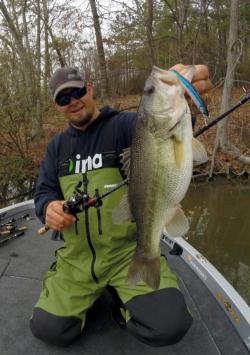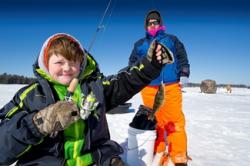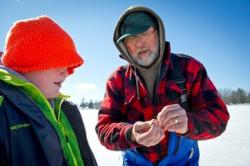Bass fishing was tough last month with the water temperatures in the 40s but it will start getting better this month when we have a few warm days in a row. But since bass clubs here fish 12 months of the year, we put up with the good and bad.
Three weeks ago the Flint River tournament at Sinclair was won with just over nine pounds but it took only 4.89 pounds for fourth place. The water got even colder by the next Saturday when the Potato Creek Bassmasters went to Sinclair.
In that tournament a week ago last Saturday 15 fishermen landed 35 keepers weighing 55 pounds. There were two limits. Raymond English had five weighing 7.57 pounds for first. William Scott placed second with four at 7.35 pounds, JJ Compton had five at 6.19 for third and Mike Cox, with just one fish, but the right one, was fourth and had big fish with a 5.18 pounder.
Last Sunday the Spalding County Sportsman Club fished Jackson for our February tournament. After fishing eight hours 13 members brought in 19 keepers weighing about 25 pounds. There was one limit and three fishermen didn’t have a keeper.
I won with five at 7.34 pounds, Chris Davies had two at 4.03 for second and his 2.54 pound spot was big fish, third was Sam Smith with three keepers weighing 3.03 pounds and Jordan McDonald had one weighing 1.74 for fourth.
This year has been Déjà vu all over again for me. Last year and this year in the first Flint River tournament at Sinclair I got second place and second biggest bass. Lee Hancock beat me for both first and big fish both years. Last year at Jackson I had the only limit and won, and had second biggest fish, just like this year. I hope I break that pattern since the Flint River club is fishing Bartletts Ferry next Sunday and last year I zeroed that tournament!
Jackson was tough. Linda and I had gone to Jackson on Wednesday and rode around, mostly looking for baitfish, a good sign bass are in an area. I fished a little and landed one keeper on a crawfish crankbait.
On Sunday Jordan and I started on one of my favorite rocky points but got no bites. After about an hour we headed to the creek where I won last year and there were six boats fishing the area. I will not pull in right ahead of another fisherman so I went to another place.
After working a few points and banks I cast a crawfish crankbait to a boathouse and ramp in front of it and thought I hooked a stick.
My line went a little sideways but I felt nothing. Then it pulled a little and I landed a keeper largemouth at 10:10 AM.
We started fishing places I fished years ago but had not tried for a long time. The reason I fished them was the shad I saw on my depthfinder in the areas on Wednesday. At 11:10 I hooked a spot off a seawall and rocky point and landed it, and on the other side of the point Jordan got hung on the rocks. As he pulled his crankbait loose his keeper hit it and he landed it.
At 12:10 I cast to another rocky point and landed my biggest fish, a two pound spot. Then I cast to a seawall and started reeling and again my line went sideways like I had hooked a stick. But I saw a flash in the water and landed my fourth keeper at 12:45.
After trying a few more places I went to where I had landed the keeper Wednesday and again my line went sideways coming off a seawall. It was another keeper largemouth and filled my limit at 2:15. After that I started fishing a big jig and pig hoping for a big fish and giving Jordan a chance to cast his plug to places first. I was trying to help him catch more keepers as well as trying to land a big fish myself, but it didn’t work for either of us.
The bass were very sluggish in the 45 degree water and I was surprised to land three largemouth. Spots usually bite better in cold water and there were only five largemouth brought to the scales out of 19 keepers in the tournament.
When the water is that cold I fish a crankbait very slowly. When it hits the water I turn my reel handle a couple of times to get it down to the bottom then move it as slowly as I can to keep it there. I told Jordan I thought he was fishing too fast. He was making two casts to my every one cast.
Until the water starts warming and gets above 50 degrees, fishing slowly and fishing for spots are your best bets. Some really big bass are caught this time of year. You may not get many bites, but they may be bragging size. Most of my biggest bass, including my first two eight pounders, my biggest ever, a nine pound five ounce largemouth and my last eight pounder, a eight pound thirteen ounce largemouth, were caught at Jackson in January and February. All but one hit crankbaits.
Don’t let the cold keep you home. You can catch bass this time of year.






